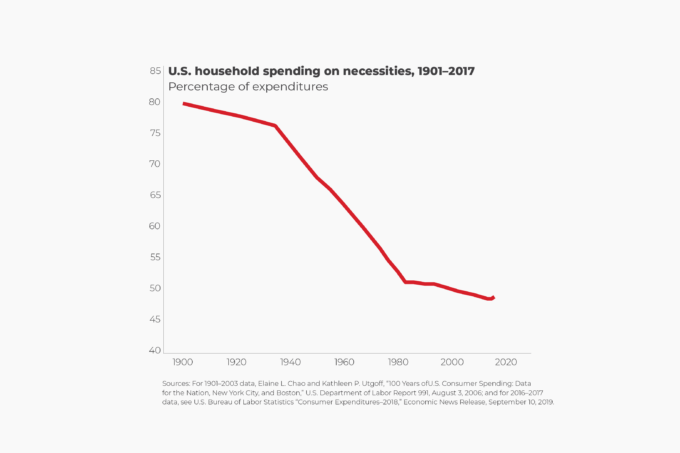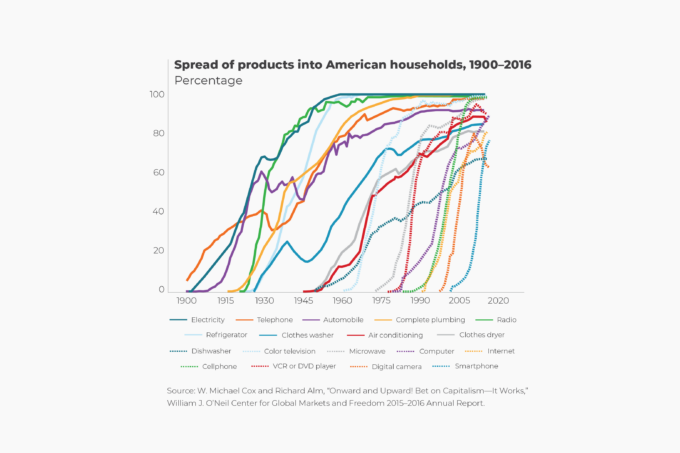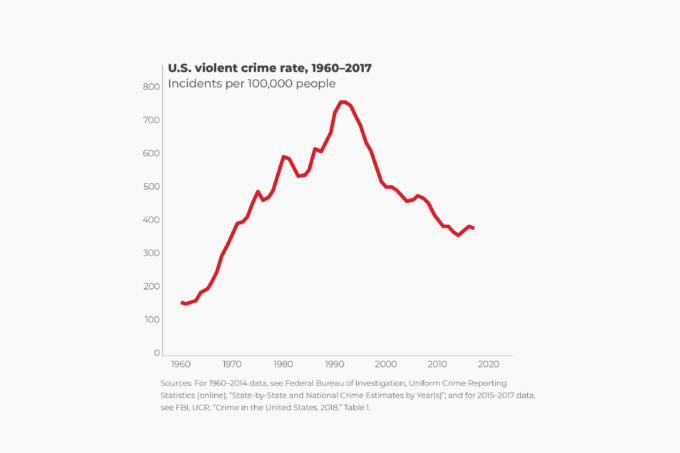The size of personal living space is an important indicator of human well-being. The primitive dwellings of our farming ancestors, which they built for themselves, were generally overcrowded and unhygienic.
Until relatively recently, for example, it was not uncommon for two or three generations of the same family to live under the same roof, often sleeping together in the only heated room in the house. Humans often shared their living space with their livestock to keep the latter safe from predators and thieves. That created a fertile ground for vermin and parasites, leading to periodic outbreaks of deadly diseases.
As late as 1900, a regular American home contained between 700 and 1,200 square feet of living space. According to the National Association of Home Builders, “More than 20 percent of the U.S. population lived in crowded units, with entire families often sharing one or two rooms.” To make matters worse, only 50 percent of U.S. homes contained a bathroom. Half of the population, in other words, had to use communal bathrooms or an outhouse.
By 1973, writes Mark J. Perry from the University of Michigan, a newly built U.S. home averaged 1,660 square feet. In 2017, it averaged 2,631 square feet. That’s a 59 percent improvement. Over the same period, the size of the average U.S. household fell from 3.01 to 2.54 people. As such, the living space of an average American increased from 551 square feet in 1973 to 1,058 square feet in 2017.1 That amounts to an average increase in living space per person of 92 percent.
Between 1973 and 2017, the share of new houses built with four or more bedrooms rose from 23 percent to 46 percent. Moreover, the share of houses with three or more bathrooms rose from 12 percent to 37 percent between 1987 and 2017.
- Mark J. Perry, personal communication with author (Marian L. Tupy), July 2, 2018. The U.S. home size figures in Trend 75 differ slightly from U.S. home size figures in Trend 70. Note that the data come from two different sources and cover two slightly different time periods.







